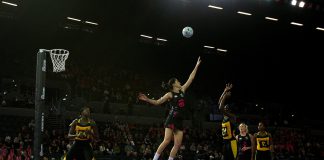If your child is keen to take their swimming more seriously, dryland training is an inevitable part of a swimmer’s routine. Jacob explains why and how young swimmers can be introduced to dryland work.
Dryland training should be a part of every young swimmer’s life. It is necessary to implement strength training and conditioning into their weekly schedule to support their pool work. The purpose of including dryland training is to improve overall power, athleticism and speed in the water.
It can be difficult to build muscle just from swimming. Including dryland training helps to develop muscle mass. You aren’t likely to see an increase in muscle mass from swimming alone, as the muscle groups aren’t triggered in the same way that they would be in the gym. Building muscle strength is a good way to increase overall strength, which can translate into improvements in the water.
Core strength is especially important in swimming, as improving this improves overall swimming style. Good core strength can make it easier to hold the correct body position in the water, and also allows for faster, tighter tumble turns. Dryland training is a good way to increase core strength through the use to core sets that activate and target all the relevant muscles.
General bodyweight training can be implemented into a young swimmer’s training in order to get an idea of what needs to be done, whether that be a core workout before or after a swim, adding in some press-ups, body weight squats, lunges – there’s lots of options to incorporate into their training time.
You’ll be impressed with the benefits your child will see in the water. Spending an extra 10-15mins poolside after a swim doing some core will be enough to get the ball rolling. Not only is dryland training food for strength, but it is also good for maintenance. You may not think about it when you are swimming, but swimming involves a lot of repetitive movements that over time may start to have an effect on your body. For example, your child may find that they get sore shoulders from time to time. By implementing dryland before/after a swim, they are going to strengthen the muscles around their joints, which will help to avoid injuries.
As children get older, they will begin to implement weighted dryland sessions and be able to see more strength progressions. However, it is important not to start too early, as children may begin to develop issues later on as a result. Only begin a weighted programme after consultation with a swimming coach, or try AUT Millennium’s Athlete Development Academy – they’re experts in age-appropriate strength and conditioning.
If you’d like some ideas for your child to try, feel free to email me! [email protected]






































